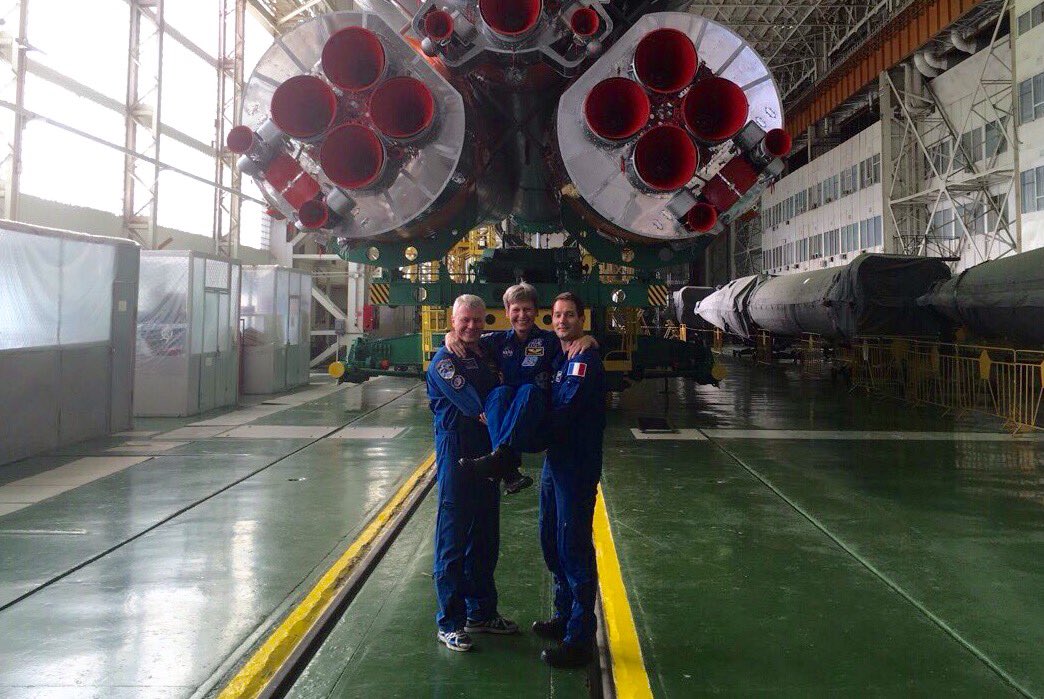
Demonstrating the need to mutually “support” one another, Oleg Novitsky (left) and Thomas Pesquet cradle Peggy Whitson, as their Soyuz-FG booster undergoes final preparation behind them. Photo Credit: NASA/Peggy Whitson/Twitter
Three new crew members, including the world’s most experienced female space traveler, will launch into the night from Baikonur Cosmodrome, later this week, to begin a six-month expedition to the International Space Station (ISS). Soyuz MS-03 is currently slated to fly from Site 1/5—the famed “Gagarin’s Start” at the Central Asian spaceport—at 2:20 a.m. local time on Friday, 18 November (3:20 p.m. EST on 17 November), bearing Russian cosmonaut Oleg Novitsky, Frenchman Thomas Pesquet and former NASA Chief Astronaut Peggy Whitson. The trio will follow a lengthy rendezvous profile, lasting two days and about 34 orbits, before docking at the station’s Earth-facing (or “nadir”) Rassvet module. They will initially form the second half of Expedition 50, led by NASA astronaut Shane Kimbrough, before Whitson rotates into the command of Expedition 51 in late February and helms the space station through Soyuz MS-03’s return to Earth in mid-May 2017.
Commanding tomorrow’s mission will be Oleg Novitsky, a 45-year-old retired Russian Air Force lieutenant-colonel. A qualified engineer, he served ten years as an attack and air-defense pilot in the Russian Air Force and, after a spell in the Air Force Academy and further military assignments, was selected for cosmonaut training in October 2006. He was Russia’s director of operations at the Johnson Space Center (JSC) in Houston, Texas, before being announced in early 2010 as a crew member for Expedition 33/34. Together with Russian crewmate Yevgeni Tarelkin and NASA’s Kevin Ford, Novitsky launched aboard Soyuz MS-06 in October 2012 and the trio logged 143 days in space. In August 2015, he was assigned to his next crew, alongside Whitson and Pesquet.
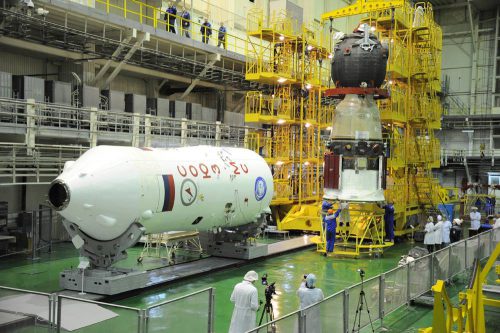
The Soyuz MS-03 spacecraft (at right) is readied for encapsulation inside its Soyuz-FG payload fairing. Photo Credit: NASA/Peggy Whitson/Twitter
With Novitsky in the center seat aboard Soyuz MS-03, the left-side “Flight Engineer-1” position will be occupied by 38-year-old Thomas Pesquet, who will become France’s 10th astronaut since the flight of Jean-Loup Chretien in June 1982 and the first Frenchman to visit space since Leopold Eyharts in early 2008. Having qualified in spacecraft design and control, Pesquet worked for Thales Alenia Space on satellite systems and later with the Centre national d’études spatiales (CNES)—the French national space center—before joining Air France and graduating from flight school. He flew as an Airbus 320 commercial pilot and was selected by the European Space Agency (ESA) for astronaut training in May 2009. Pesquet was named to Expeditions 50/51 in March 2014 and the complete Soyuz MS-03 crew was announced by NASA and the International Partners in August 2015.
To Novitsky’s right side, in the Flight Engineer-2 seat, will be biochemist and former NASA Chief Astronaut Peggy Whitson, who will be embarking on her third space mission. Aged 56—and turning 57 in February 2017—she will also become the oldest woman ever to journey into space, eclipsing Shannon Lucid. Whitson launches with a cumulative 377 days in space from two previous long-duration ISS increments, the most recent of which saw her become the first woman to command a space station. Initially employed by NASA as a research biochemist, Whitson was Project Scientist of the shuttle-Mir program by the mid-1990s and was selected as an astronaut candidate in May 1996. She served as a flight engineer aboard Expedition 5 in June-December 2002 and became the first woman to command the ISS, leading Expedition 16 from October 2007 through April 2008. By the end of her second mission, she had accrued a raft of empirical records: in addition to the first female station command, she was the world’s most flight-seasoned female astronaut and the most experienced female spacewalker. To this day, Whitson remains the world’s most experienced woman spacefarer and the second most experienced woman spacewalker.
Following a press conference at the Johnson Space Center (JSC) in Houston, Texas, at the end of August, the crew and their backups—Russian cosmonaut Fyodor Yurchikhin, Italian astronaut Paolo Nespoli and NASA’s Jack Fischer—worked through final training and examinations. In a humorous tweet to his 56,000 followers, Pesquet stood next to a pile of books and manuals which equaled him in height. “They only send you to space,” he explained, “when you’ve studied your size in books.”
In early October, Novitsky and Pesquet wrapped up a full-up simulation for their respective roles in the event a manual Soyuz descent and landing became necessary. By month’s end, both the prime and backup crews officially concluded their training and flew from Star City to the Baikonur launch site on 1 November. Over the next several days, they participated in evaluations of Soyuz MS-03, fully outfitted in their Sokol (“Falcon”) launch and entry suits, and carried out checks of radio communications and the laser rangefinder, as well as acquainting themselves with documentation and flight plans.
Original plans called for a 16 November launch, which would have placed Soyuz MS-03 onto a six-hour and four-orbit “fast rendezvous”, but the decision was ultimately made to slip by 24 hours. “The adjustment of the launch date came after an assessment by the Russians that put a four-orbit rendezvous on the 16th on the edge of being possible, due to orbital mechanics,” NASA’s Rob Navias told AmericaSpace. “As a result, they moved the date to 17 November to accommodate a 34-orbit rendezvous. Otherwise, the date would have been pushed further to the right to bring in a four-orbit rendezvous. Future launch dates will be assessed to try to accommodate four-orbit rendezvous cases, if they fit the overall ISS flight program. The MS vehicle can and will accommodate four-orbit rendezvous cases in the future, if those dates fit the overall ISS flight program.” The adjustment created some amusement on Twitter, with Pesquet tweeting on 31 October that his mission was at L-16 days. “Actually,” he told his followers, “I think we’re at L-16, but hey I can’t wait to launch…and they keep changing the date to confuse me.”
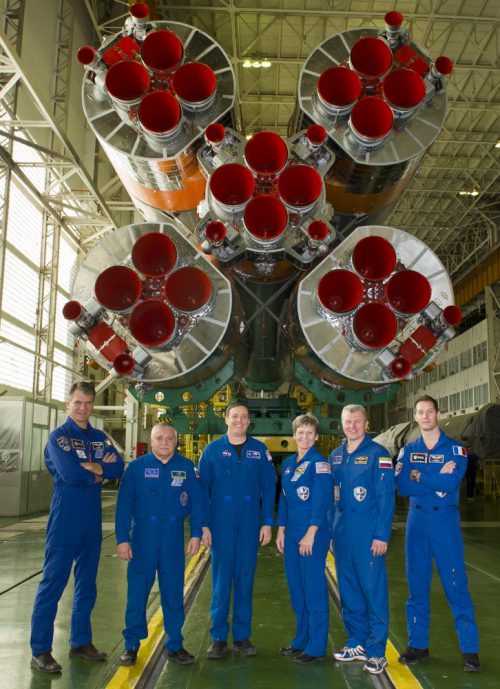
The prime and backup crews for Soyuz MS-03 represent four sovereign nations. From left to right are Italy’s Paolo Nespoli, Russian cosmonaut Fyodor Yurchikhin, NASA astronauts Jack Fischer and Peggy Whitson, Russian cosmonaut Oleg Novitsky and Frenchman Thomas Pesquet. Photo Credit: NASA
As well as the technical preparations, tradition always governs a crew’s final days on Earth. Prime and backups jointly raised four flags—of Russia, France, the United States and the launch site’s sovereign nation, Kazakhstan—and on 10 November Novitsky and Whitson assisted Pesquet in ceremonially planting a tree. The event gave the Frenchman an opportunity to take stock of the trees planted by the other five members of his 2009 European astronaut class, nicknamed the “Shenanigans”. He noted that Luca Parmitano’s 3.5-year-old tree was “growing well”, that Alexander Gerst’s 2.5-year-old specimen was “looking better than the last time I saw it” and that Samantha Cristoforetti’s two-year-old contribution was “growing outwards and looking healthy”. Younger ones had further to go, he said, with Andreas Mogensen’s tree, planted in August 2015, “looking good”, and Tim Peake’s December 2015 tree not having fared well to date.
With Thursday’s flight, all six Shenanigans will now have flown into space. At the instant Pesquet departs Earth, the sextet will have accrued 1.9 years of spaceflight experience across their respective missions. First-flown was Parmitano, who flew for 166 days in May-November 2013, during which he became Italy’s first spacewalker, chalking up seven hours and 39 minutes in two EVAs. Next came Gerst, whose 165-day increment in May-November 2014 saw him perform a single EVA. He has since been assigned to another ISS expedition in 2018 and will become the first German commander of a space station crew. Cristoforetti flew for over 199 days between November 2014 and June 2015, earning herself the record for the longest single mission ever flown by a woman. Mogensen became Denmark’s first man in space on a ten-day September 2015 flight, whilst Peake spent 186 days in orbit during Expeditions 46/47 in December 2015 through mid-June 2016, becoming Britain’s first “official” spacewalker.
As the prime and backup crews completed their preparations, the Soyuz MS-03 spacecraft was fully integrated by 7 November and encapsulated within its bulbous payload fairing two days later. It was then transported to the assembly and test building at Baikonur’s Site 112 and mated to the mammoth Soyuz-FG booster on the 13th. “This is what 20 million horsepower looks like,” Pesquet tweeted, as he shared an image of himself, Novitsky and Whitson at the base of the booster. “Not sure yet what it feels like, but we will find out.” Early Monday morning, the 162.4-foot-tall (49.5-meter) booster was rolled horizontally by rail from Site 112 to Gagarin’s Start, where it was elevated to a vertical configuration. Watching the rollout were both crews, with Jack Fischer tweeting a photograph of himself, Yurchikhin and Nespoli and quipping: “Only in Baikonur can you have a Soyuz rocket photobomb your crew picture. Rocket’s ready!”
Early Thursday, the Novitsky and Yurchikhin crews will be awakened about 8.5 hours ahead of launch. They will shower and subject themselves to microbial sampling, in support of the biomedical investigations to be performed aboard the space station. After signing their bedroom doors in Baikonur’s Cosmonaut Hotel, they will receive a traditional blessing from a Russian Orthodox priest and head to Site 254 to don their Sokol suits. This will give Novitsky, Pesquet and Whitson a final opportunity—albeit from behind glass screens—to bid farewell to family and friends. Fully suited, the crew will then head out to Site 1/5 and their waiting rocket. Novitsky will assume the center seat aboard Soyuz MS-03, with Pesquet to his left and Whitson to his right.
Due to the month-delay in the launch of their predecessors aboard Soyuz MS-02, only 29 days will have elapsed between this flight and the last. Russian cosmonauts Sergei Ryzhikov and Andrei Borisenko, together with NASA astronaut Shane Kimbrough, launched from Baikonur’s Site 31/6 on 19 October and are presently wrapping up their first month aboard the ISS. Twenty-nine days is the shortest gap between piloted launches to be achieved by the Russian (or Soviet) space program since ten days separated the flights of Soyuz T-4 and Soyuz 39 in March 1981.
Liftoff of the 672,000-pound (305,000 kg) Soyuz-FG is targeted for 2:20 a.m. local time on Friday, 18 November (3:20 p.m. EST on Thursday, 17 November). The RD-108 first-stage engine and its four tapering strap-on boosters—each powered by a single RD-107 engine—will provide the impetus for the initial ascent, delivering Novitsky, Pesquet and Whitson on the first Soyuz-MS launch in the hours of darkness. Two minutes into the flight, the four tapering boosters will be jettisoned, leaving the core alone to continue burning for another 2.5 minutes. By the time the RD-108 shuts down, the rocket and its human crew will have attained an altitude of 105.6 miles (170 km). Finally, the third stage will burn its RD-0110 engine for around four more minutes to inject Soyuz MS-03 into an orbit inclined 51.66 degrees to the equator.
Novitsky will perform a docking at the Rassvet module—recently vacated by Soyuz MS-01—at 5:02 p.m. EST on Saturday, 19 November, a little under 50 hours after launch. The three new arrivals will be welcomed aboard the space station by the incumbent Expedition 50 crew, although there remains precious limited time for them to acclimatize to their new surroundings. Orbital ATK’s OA-5 Cygnus cargo ship, wrapping up a month-long delivery voyage, will be robotically detached from the nadir port of the Unity node on 21 November, by means of the 57.7-foot-long (17.6-meter) Canadarm2 robotic arm. Current plans call for two more cargo vehicles to arrive in December: Russia’s Progress MS-04 at the beginning of the month and Japan’s H-II Transfer Vehicle (HTV)-6 at mid-month. The former will be docked at the Zvezda service module of the Russian Orbital Segment (ROS), with the latter taking up residence at the nadir interface of the Harmony node on the U.S. Orbital Segment (USOS). As outlined previously by AmericaSpace, HTV-6 will carry among its payload six new lithium-ion (Li-Ion) batteries for the station’s solar arrays, two of which are to be installed during a pair of EVAs by Kimbrough and Pesquet in January 2017. The other four will be installed robotically, by means of Canadarm2’s Dextre manipulator.
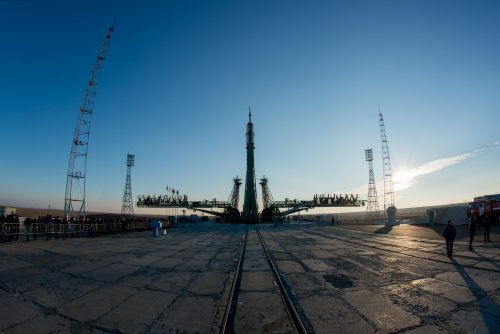
Backdropped by a crisp Baikonur dawn, the Soyuz-FG booster is raised to the vertical at Site 1/5, early Monday, 14 November. Photo Credit: Thomas Pesquet/Twitter
Other manifested cargo missions remain somewhat in flux, with SpaceX’s next Commercial Resupply Services (CRS) Dragon flight—CRS-10, laden with the Lightning Imaging Sensor (LIS) for installation onto the ISS exterior—provisionally targeted for launch early in 2017. Russia’s Progress MS-03 and HTV-6 are slated to depart in January, with the arrival of Progress MS-05 and the relocation of Pressurized Mating Adapter (PMA)-3 from the Tranquility node to its final Commercial Crew position on the Harmony node tentatively penciled-in for the February timeframe. And on the 25th of that month, Kimbrough, Ryzhikov and Borisenko will return to Earth aboard Soyuz MS-02, closing out Expedition 50 and wrapping up four months in orbit.
With their departure, Whitson will take command of Expedition 51, becoming the first woman to lead two space station increments. She and Novitsky and Pesquet will work as a three-member crew for about a month, before Soyuz MS-04 launches out of Baikonur on 27 March, carrying Fyodor Yurchikhin and Jack Fischer. Previously, the backup crew for a given ISS expedition would rotate into a prime slot, two increments later, but Russia’s decision to reduce its presence on the station from 2017 onwards has led to a juggling of cosmonaut assignments. Operating as a five-member crew through mid-May, this will represent the smallest “full-strength” ISS expedition in more than seven years. According to NASA, this reduction in crew size is not expected to have a detrimental impact on USOS science capability.
Under Whitson’s command, the station is expected to be visited by Orbital ATK’s OA-7 Cygnus, delivered to orbit atop a United Launch Alliance (ULA) Atlas V booster and forming the first member of the company’s recently-unveiled RapidLaunch architecture. Current plans call for Soyuz MS-03 to undock from the station on around 15 May and return to Earth after 179 days in orbit. If this landing date holds, Whitson will accrue a career total of 556 days in space, across her three missions, eclipsing fellow NASA astronaut Jeff Williams as the most flight-experienced U.S. spacefarer. Williams’ return to Earth, last 6/7 September, left him with a career total of 534 days in space, across a four-flight career. Whitson will not only establish a new U.S. record, but will also position herself as the world’s eighth most experienced space traveler. This will be the first time that a U.S. national has sat within the Top Ten list of most flight-seasoned spacefarers since 1983.
Quelle: AS
...
Update: 15.05 MEZ

Quelle: CNES
...
Update: 20.30 MEZ LIVE-Frams von Soyuz-MS-03

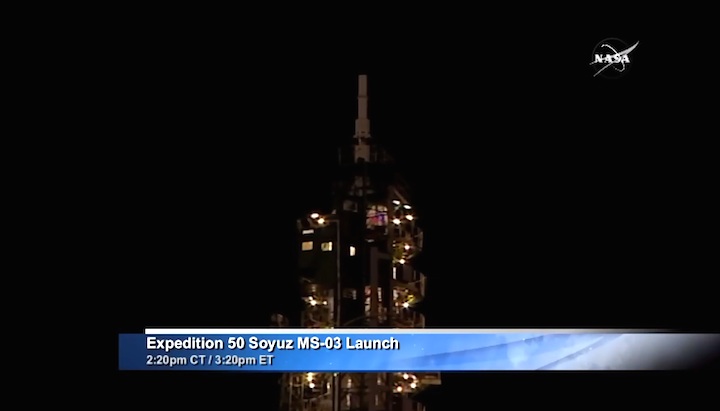
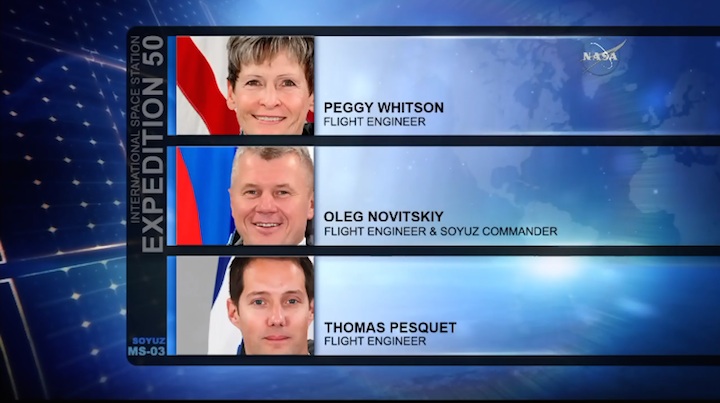
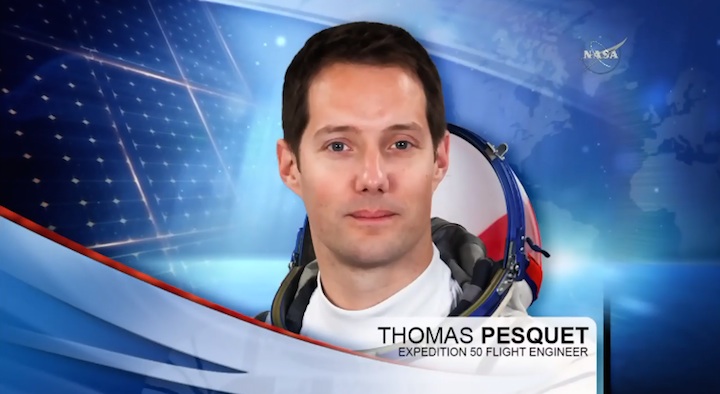
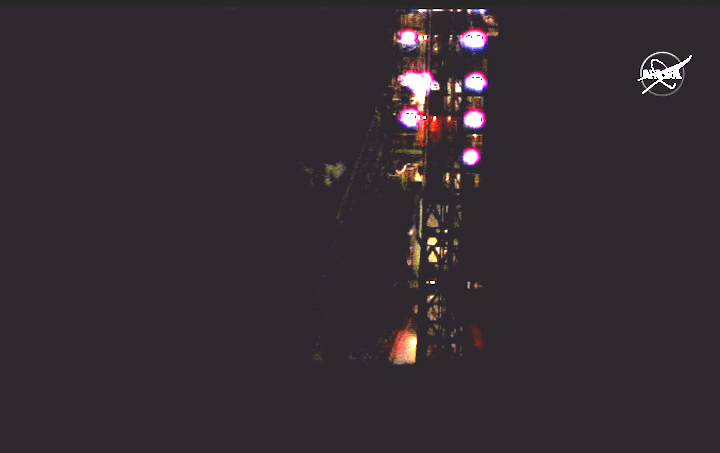

...
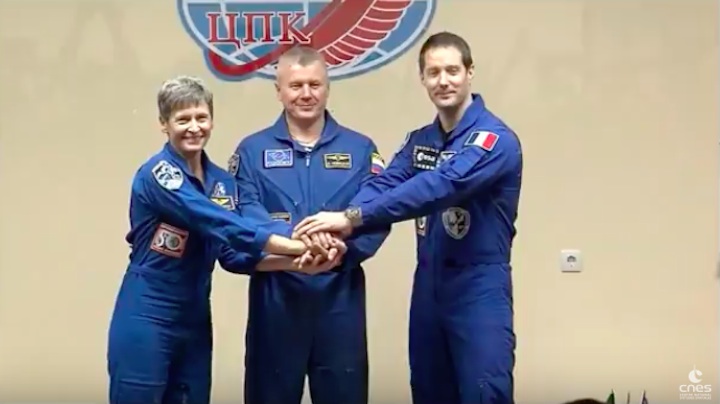
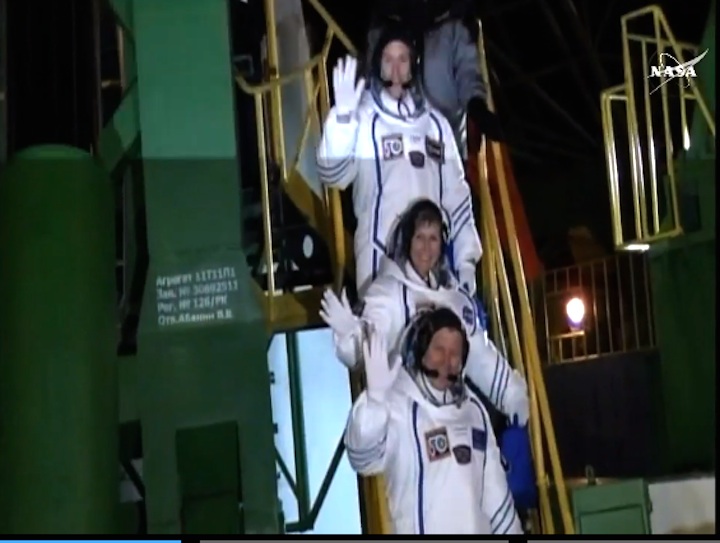
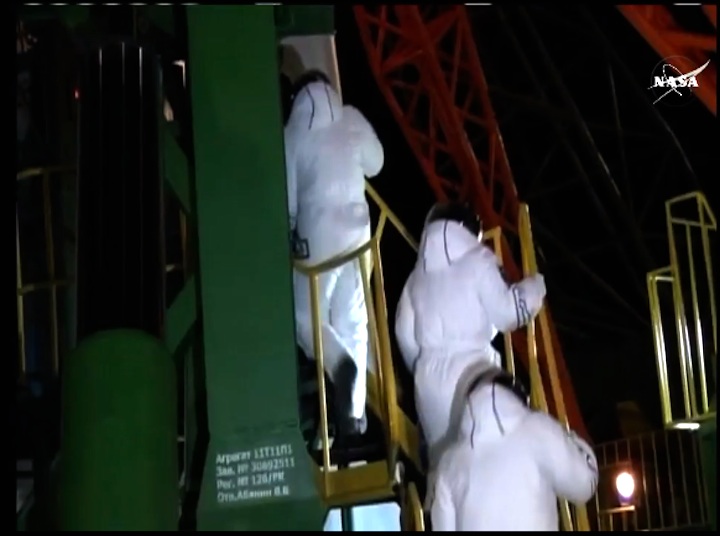

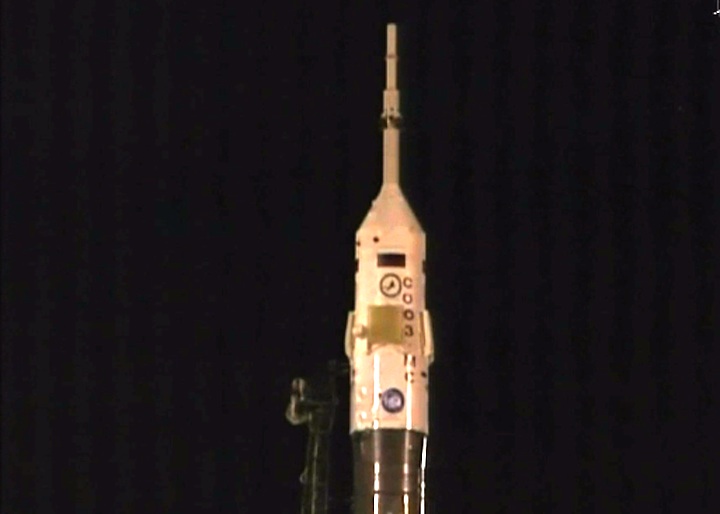
...21.30 MEZ

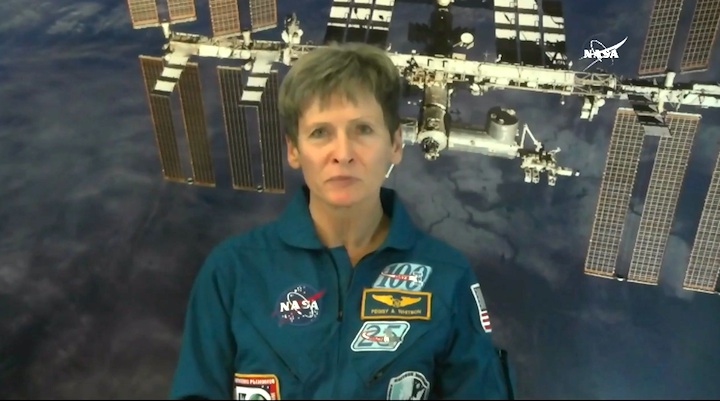
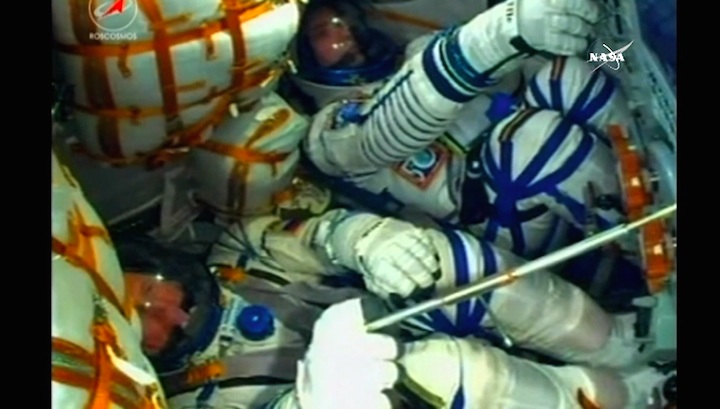
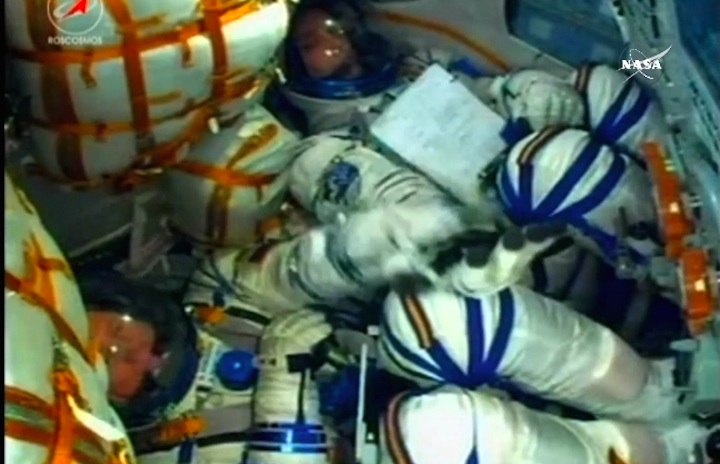
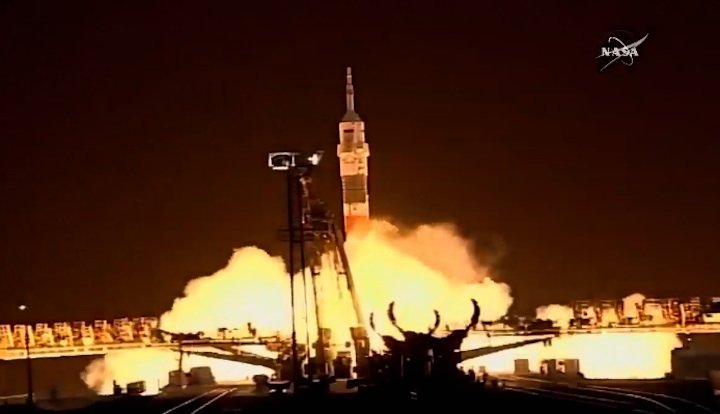
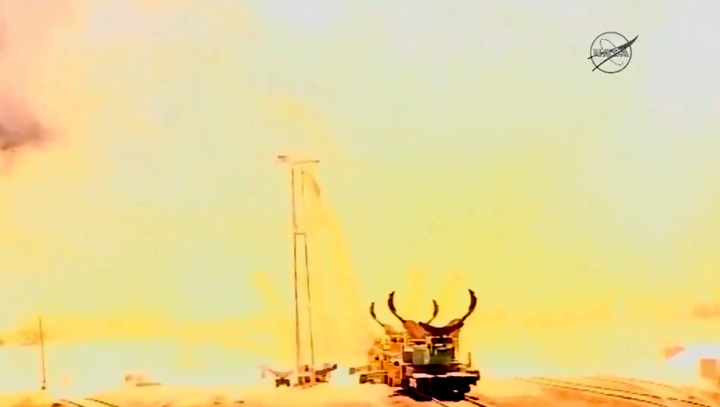
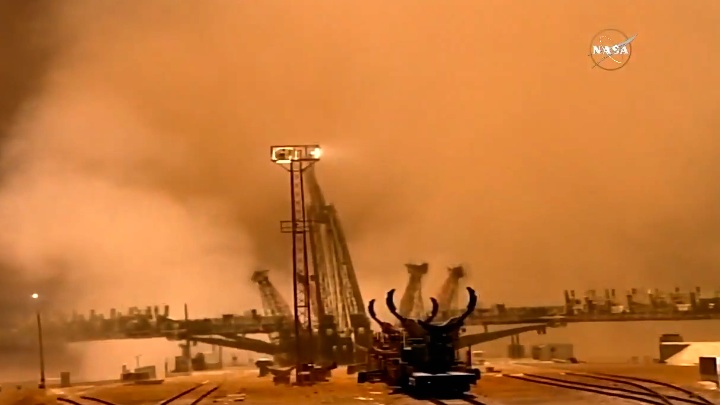
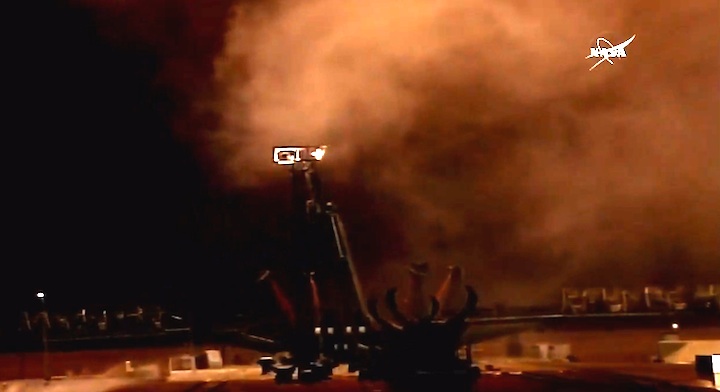
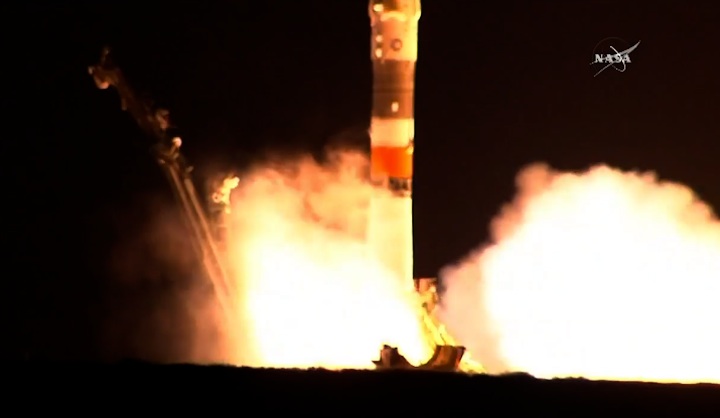
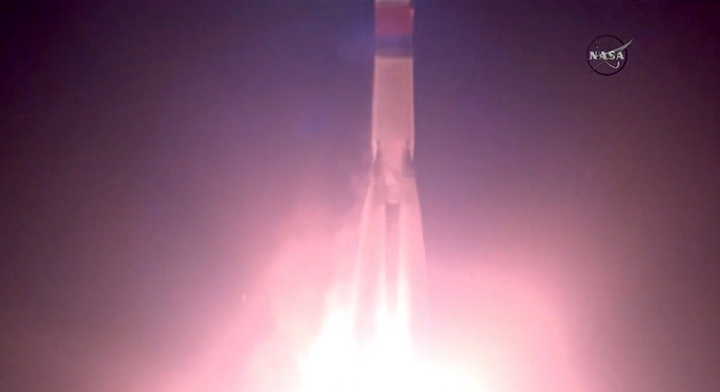
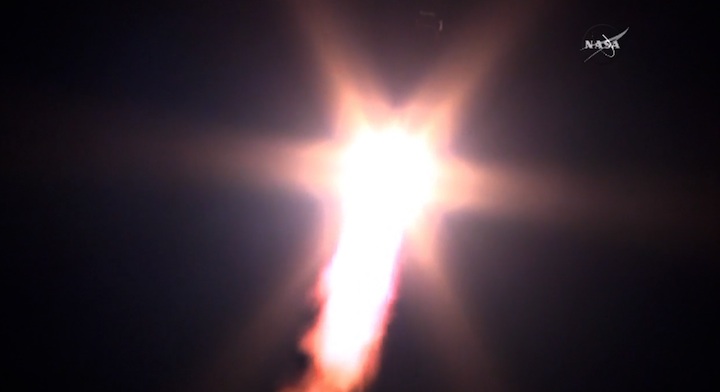

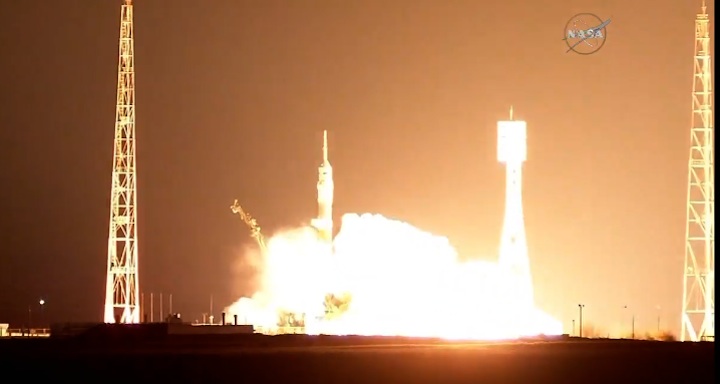
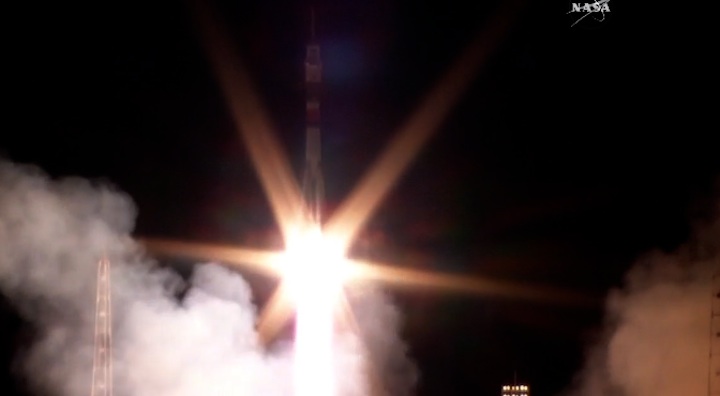
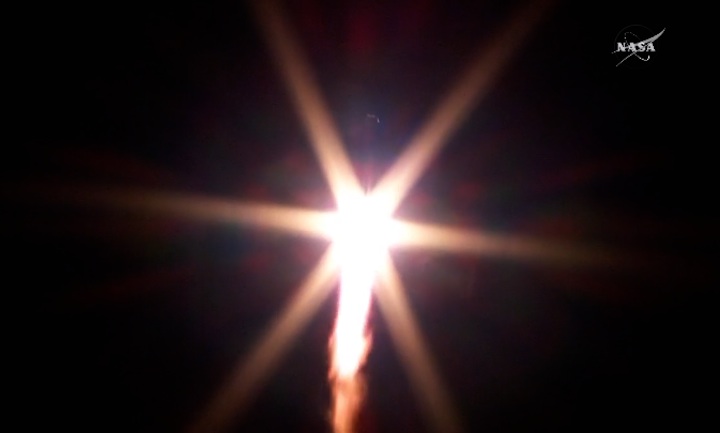
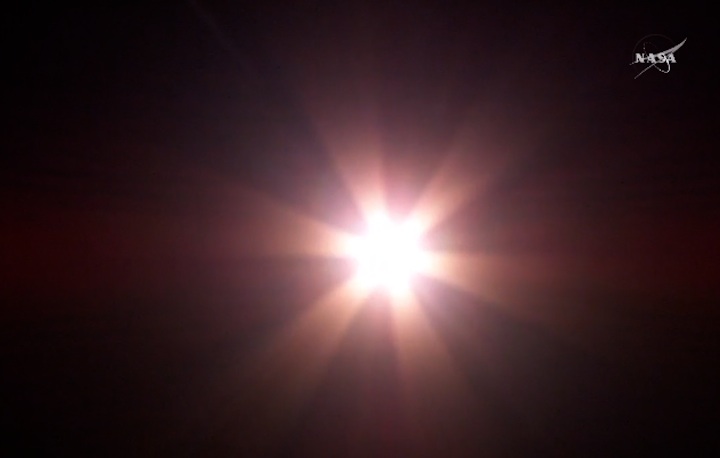
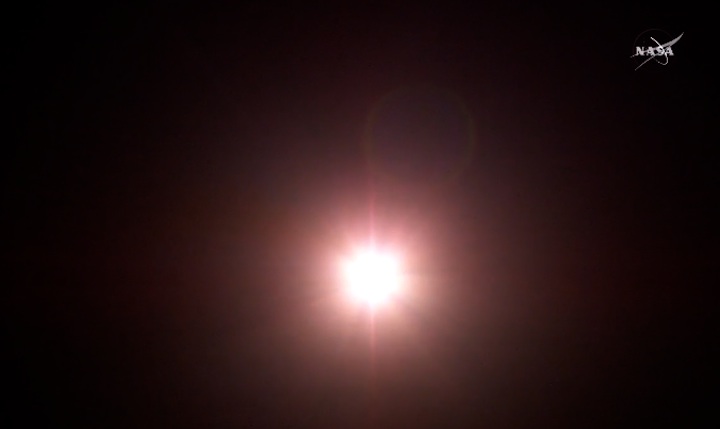
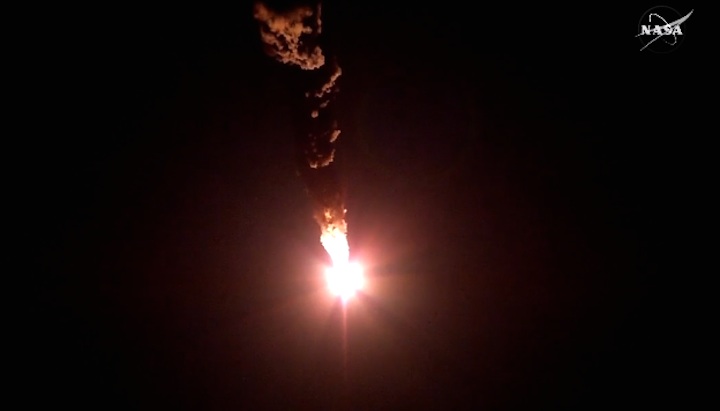

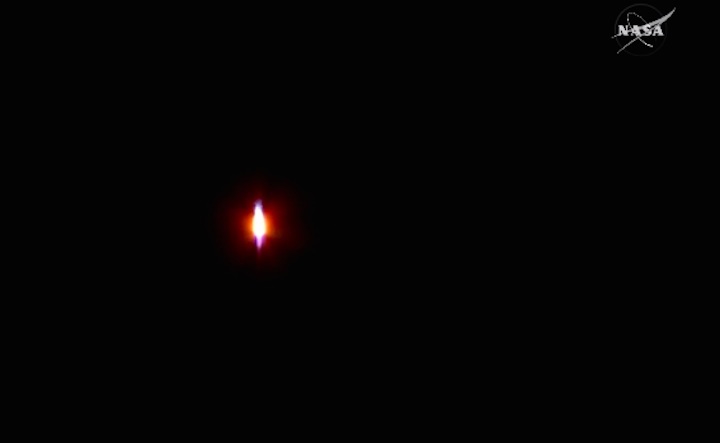
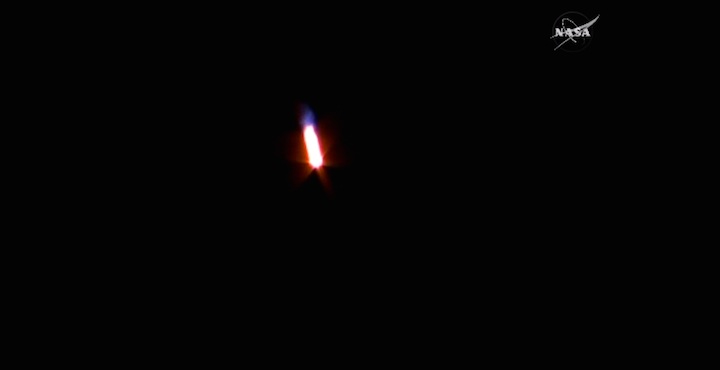
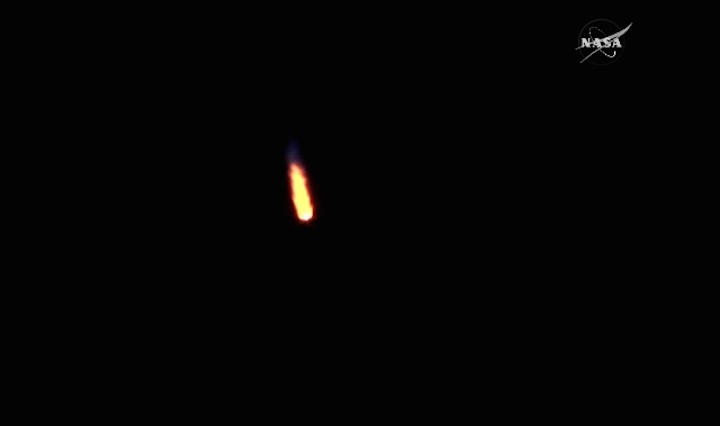
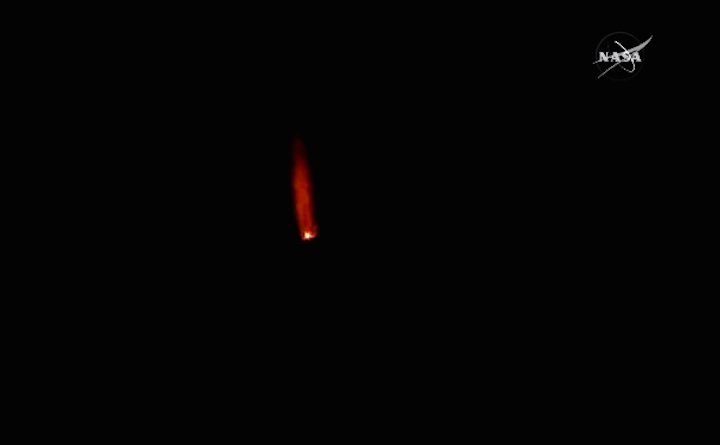
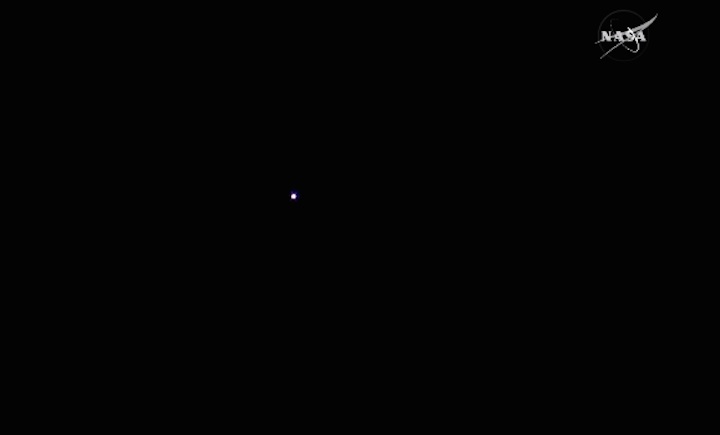
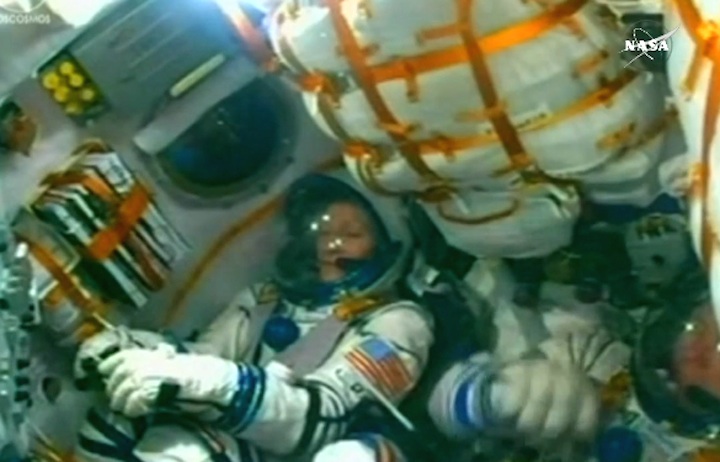
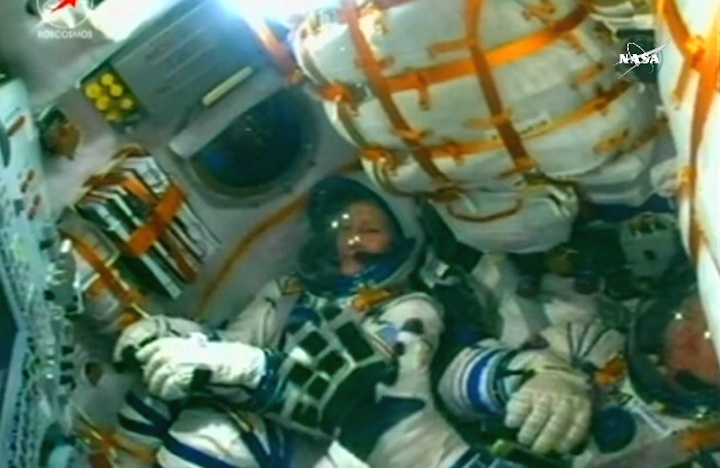
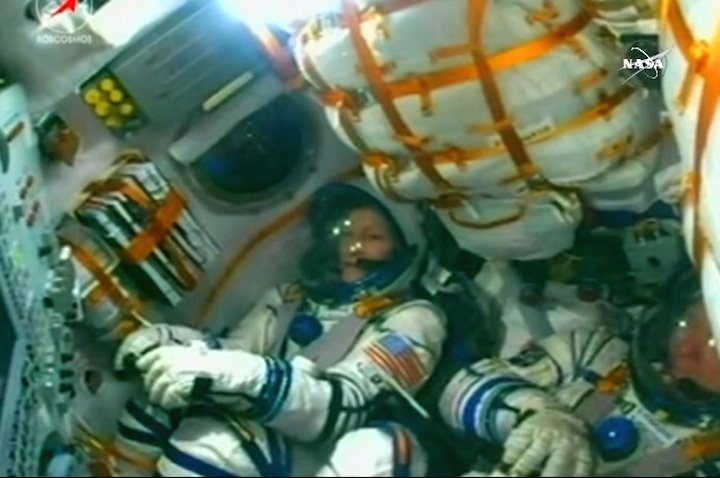
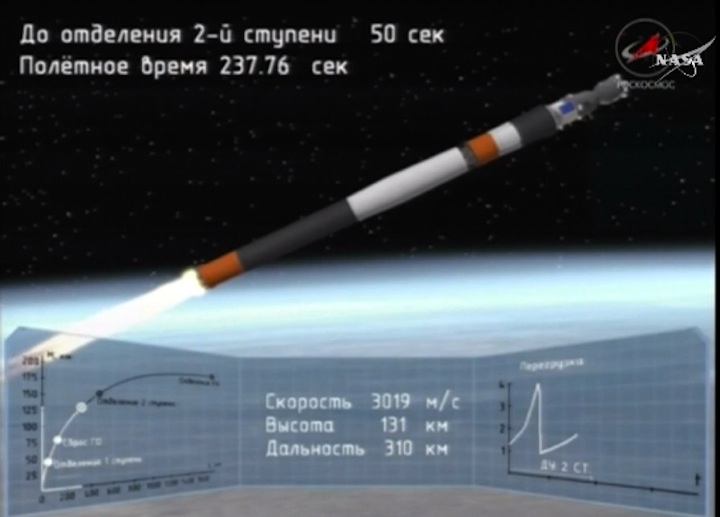
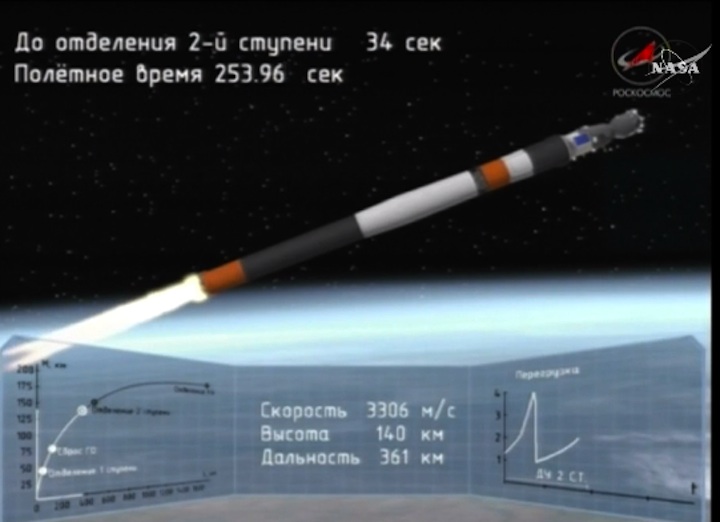
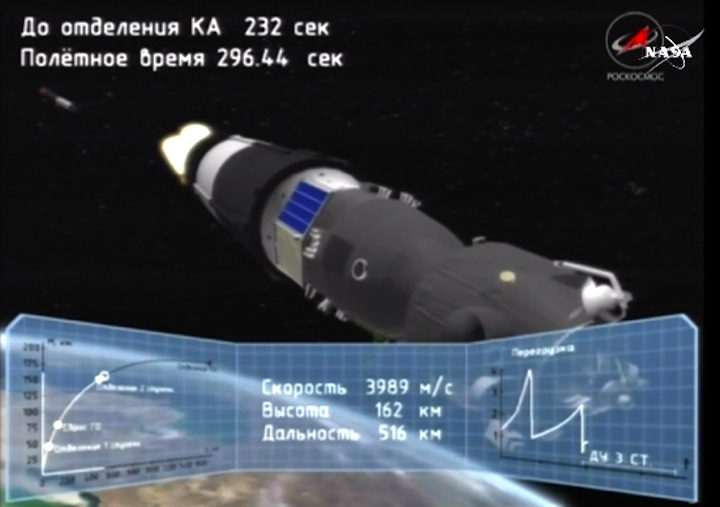
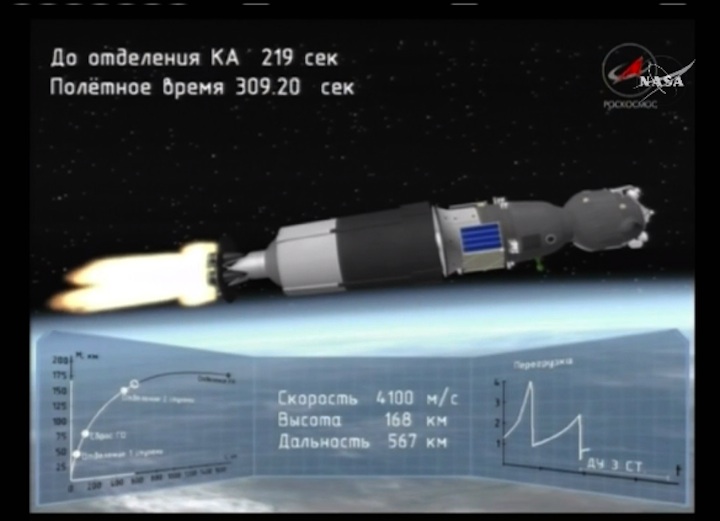
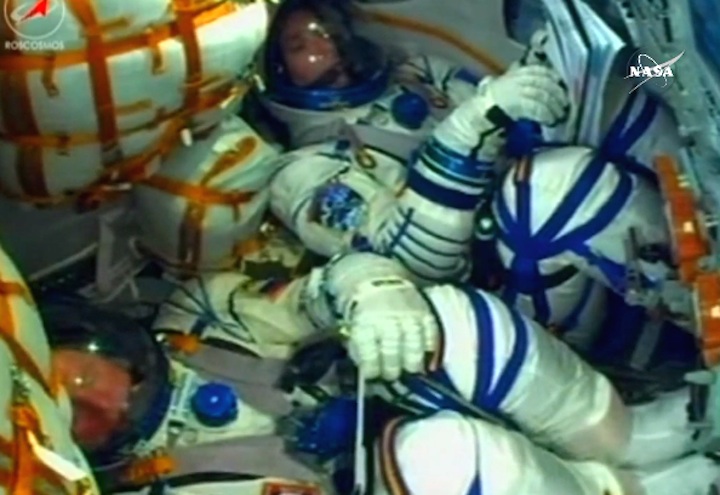
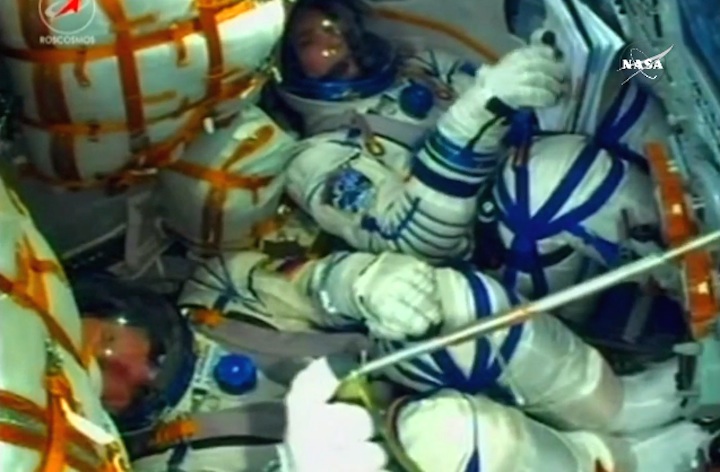
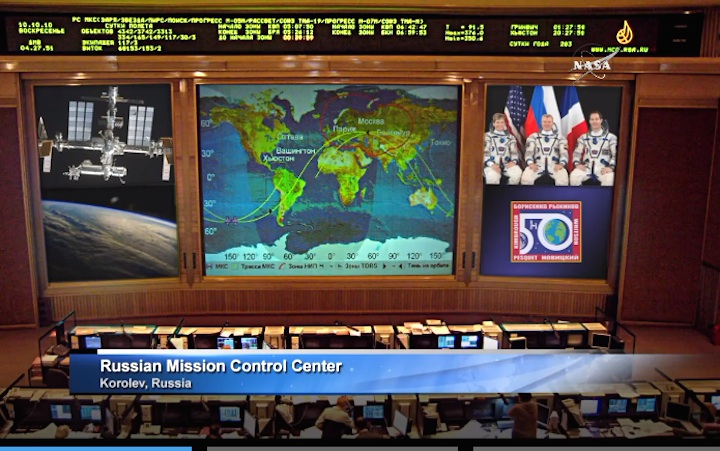
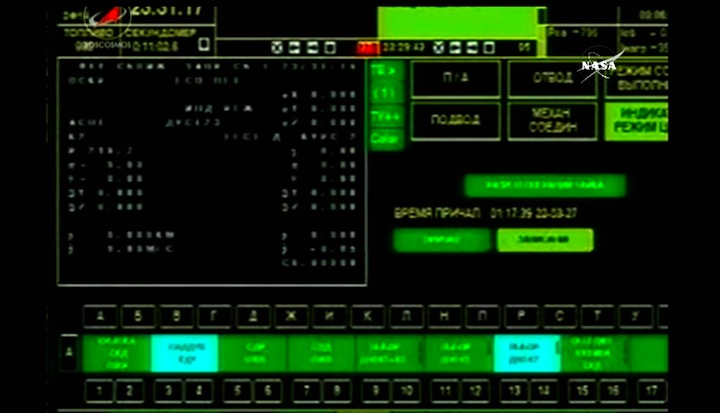
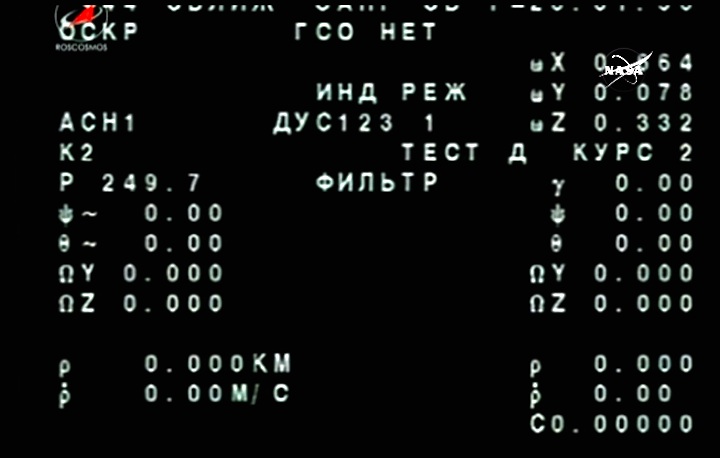
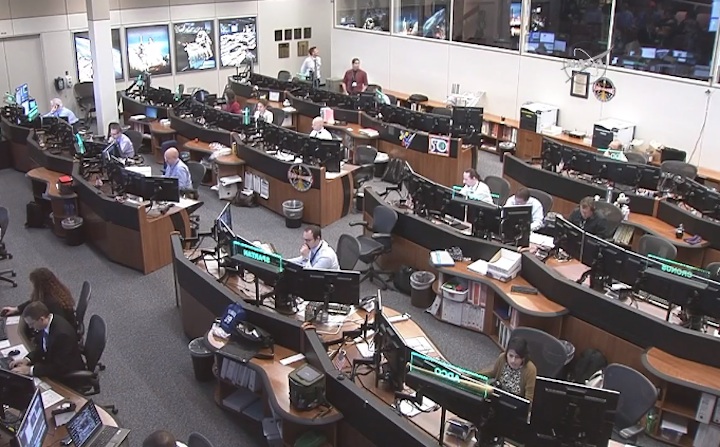
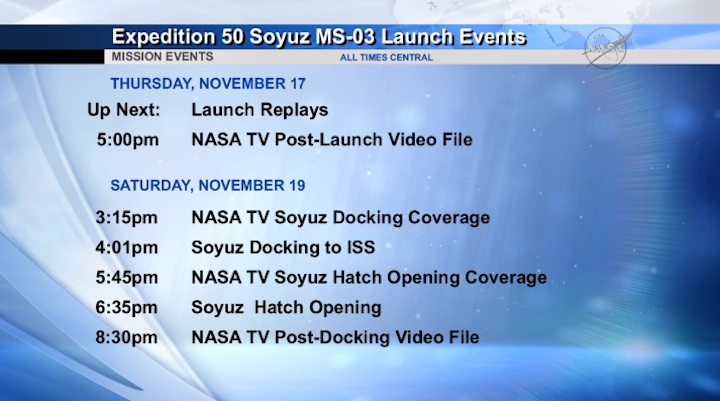
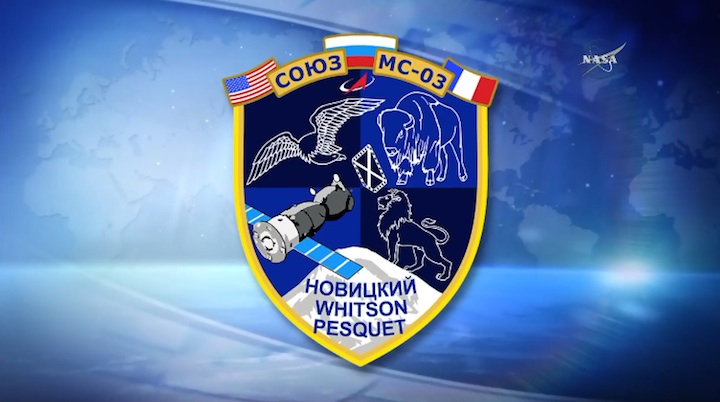
Quelle: NASA-TV

